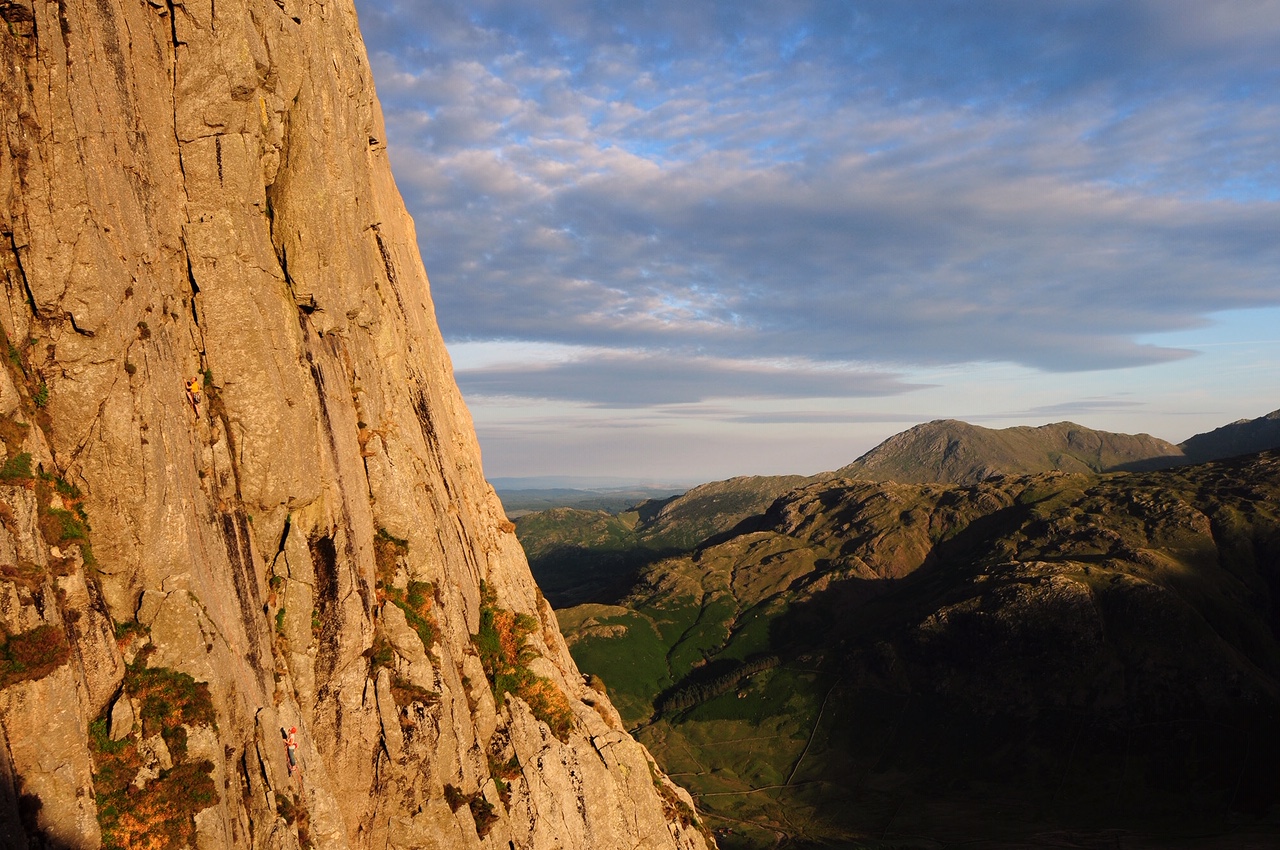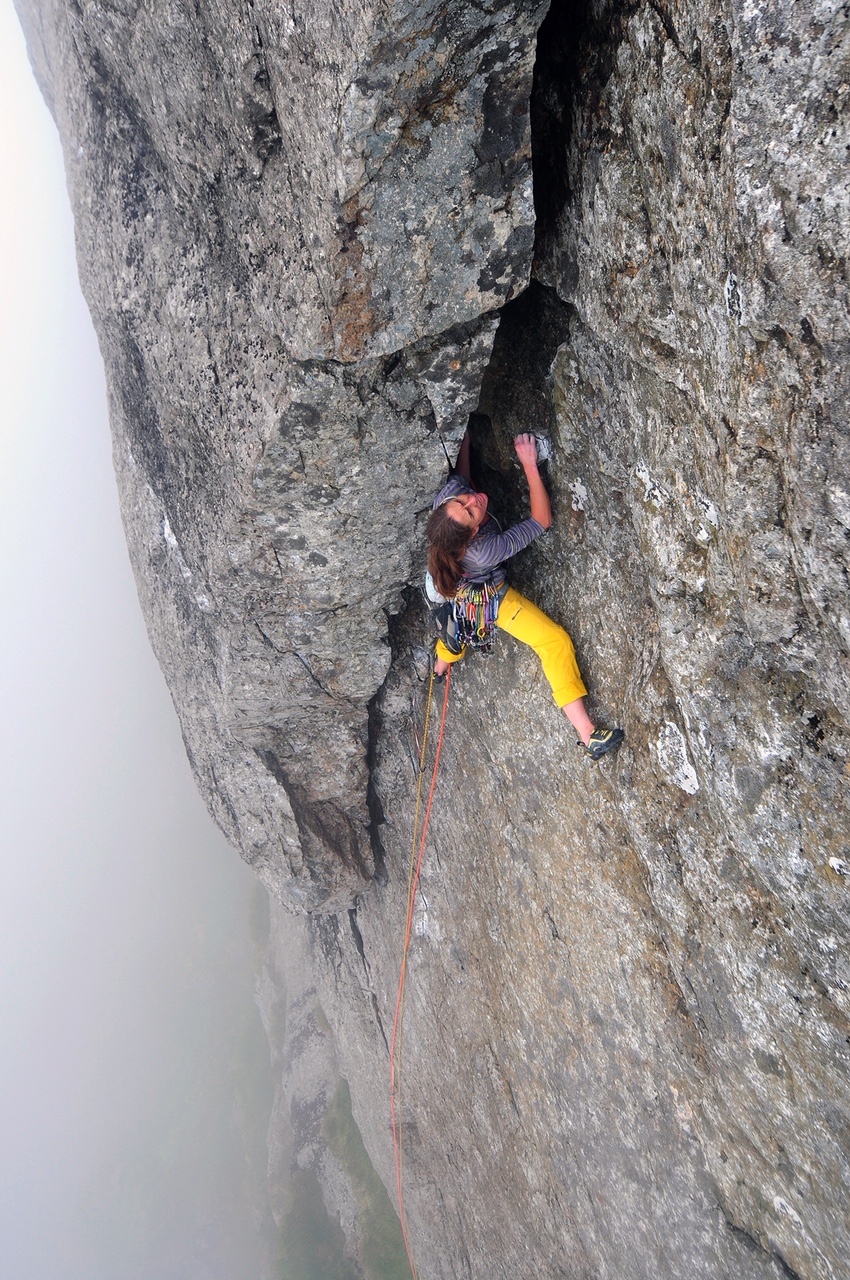Sponsored Content
We recently reviewed the fourth edition of Hard Rock edited by Ian Parnell and were delighted to find the feel of the guide had been maintained with the same high quality imagery, in this article Ian takes a look at the process of shooting and choosing photographs for the new edition.
"First published in 1974, Hard Rock established itself as one of British climbing’s most loved and essential books. Its continuing popularity has been reflected by the regular demand for new editions, over the past four decades. Part guidebook, part literary compendium, Hard Rock was also one of the very first glossy coffee table expositions of the climbing art. Packed with dramatic full-page images the book was highly innovative for the time. When Vertebrate Publishing invited me to pull together a new fourth edition I knew its success would depend on matching the visual impact of the original, but also to do so in the much more visually competitive world that we have today.
Ken Wilson, editor and publisher of the first three editions of Hard Rock was a man of strong views. In many ways he was as well known for his opinions on everything from bolts to climbing walls, chalk to sexism in climbing clubs, as he was for his contributions to mountain literature. It came as no surprise therefore to learn that Ken had a very specific perspective on what makes a good climbing photo.

Paul Boggis and Gilly McArthur on 'The Crack' © Ian Parnell
Ken didn’t like his images to be too ‘poetic’ or for that matter ‘photographic’. By this Ken meant that he wanted a climbing photograph to be less about the personal emotional journey of the climber and more about the climb itself. Ken’s background as an architectural photographer meant that he had a strong eye for how the full environment of a route could be captured to best effect in an image. Big brooding cliffs like Clogwyn Dur Arddu on Snowdon were his favourites.
His own images, in stark black and white, highlighted a cliff’s strongest features, with bold cracks and corner-lines soaring up the page. In Hard Rock the climb, rather than the climber was king. It was a mantra I kept reminding myself of as I set about compiling the images for the new edition.
The current taste in contemporary climbing photography is to use a wide-angle lens and get in as close as possible (usually on an abseil rope) to the climber. The aim is to see the whites of their eyes, so that the viewer can sense the effort, the strain, the fear… Often the result is a great study of emotion but apart for the holds within reach of the climber, it can be hard to tell much about a route. During my search for new images I would frequently turn up excellent shots of this style, that were useless for the book. Finding images that bucked current trends and gave the climber space were much harder to come by. In fact some of the most successful images in the new edition of Hard Rock were taken so far away, you not only can’t see the whites of the climbers eyes, you can only just pick them out on the cliff face. Mike Hutton’s shot of Cenotaph Corner on Dinas Cromlech for example, was taken from the opposite side of the valley, and wonderfully captures the repeated right-angle corners that make up the unique architecture of this cliff.
I, myself, have always liked to maximize the emotional impact of my climbing shots, so for Hard Rock I had to learn to swing away, off route, to get a better perspective of the full line of a climb. For my shots of The Great Prow on Skye’s Blaven I rushed from one distant viewpoint on the cliff top edge, down the side gully and across the screes to fill the camera’s frame with as much of the jutting diorite prow as I could.
 Ben Wilkinson, Jamie and Sandy Ogilvie on the Great Prow Blaven © Ian Parnell
Ben Wilkinson, Jamie and Sandy Ogilvie on the Great Prow Blaven © Ian Parnell
Maintaining the style in keeping with Ken’s versions of the book was important to ensure continuity through to this new edition. The new full colour format and the addition of a dozen or so routes was a radical enough change as it was.
I didn’t want it to feel like we were creating an entirely new book, rather an updated more contemporary version relevant to today’s climbing audience.
This issue of visual style wasn’t the biggest photographic challenge though, that became evident after the first few months of the project …
Fairly quickly I managed to assemble a collection of quality images for about two thirds of the climbs featured in the book. But during that period I began to realize that for a fair few of the routes, particularly on the more remote mountain crags, good images were extremely elusive. For some of the Scottish Highland shots I would make forty to fifty enquiries without success.
But fortune was on my side, as the start of the British summer of 2017 was hot and dry for weeks on end. I made the most of that period concentrating on the Lake District’s mountain crags. Gimmer, Dove, Gable and Dow were all visited in sultry conditions. Scafell was the anomaly, as myself and the climbing team left Wasdale bathed in sunshine, only to climb up into fog so thick it made finding the routes a real challenge. Even that day proved a lucky one, leading to the cover shot of Mary Birkett on the flake of Central Buttress with the mists swirling around her.
 Mary Birkett on top of the great flake of Central Buttress on Scafell © Ian Parnell
Mary Birkett on top of the great flake of Central Buttress on Scafell © Ian Parnell
The crux of the book came with Raven’s Gully on that iconic bastion of Glen Coe, Buachaille Etive Mor. The route is a sheer-sided deep rent into the cliffs known as Slime Wall. It’s no surprise therefore that it is almost permanently wet and has long fallen out of fashion as a summer rock climb. But it was in the book and needed a good colour action photo.
With the publication date looming ever closer there was still a blank page in the book’s layout. After two years of searching for an existing photo without success - desperate measures were needed.
After a steep climb up scree covered wet ledges I arrived at the base of Raven’s Gully. The initial moves were highly insecure pulling up from a melting snow patch onto slimy rock. Normally they’d be doubly worrying as there was nothing to secure a belay too. However this wasn’t a factor today, as unable to persuade anyone to climb the route for my camera I was having to climb alone. Those moments clinging on to wet holds waiting for the sound of the self timer clicking the camera’s shutter were the scariest of the whole two years photographing the book. But in some ways they seemed fitting – to be pushed so far with this project was a reflection of what was needed to maintain the high standards of the original book. As I clung there I imaged Ken watching on, with a wry eyebrow raised, approving."
Ian Parnell
Hard Rock is available to purchase direct from Vertebrate Publishing for an SRP of £31.97




